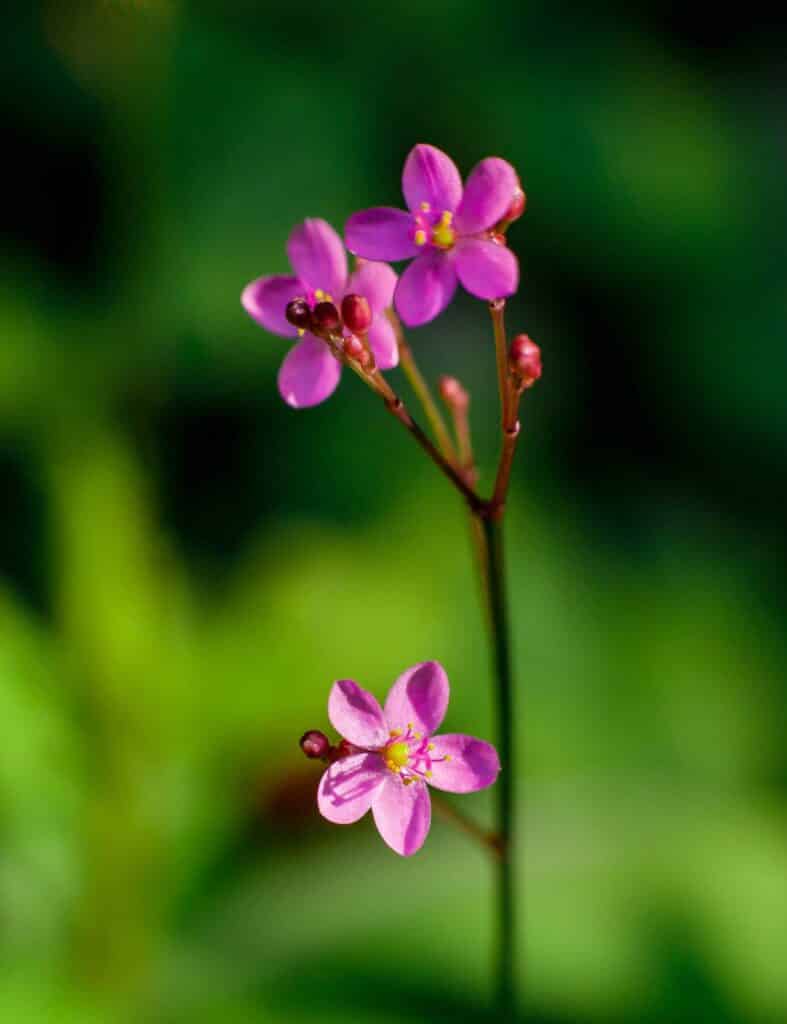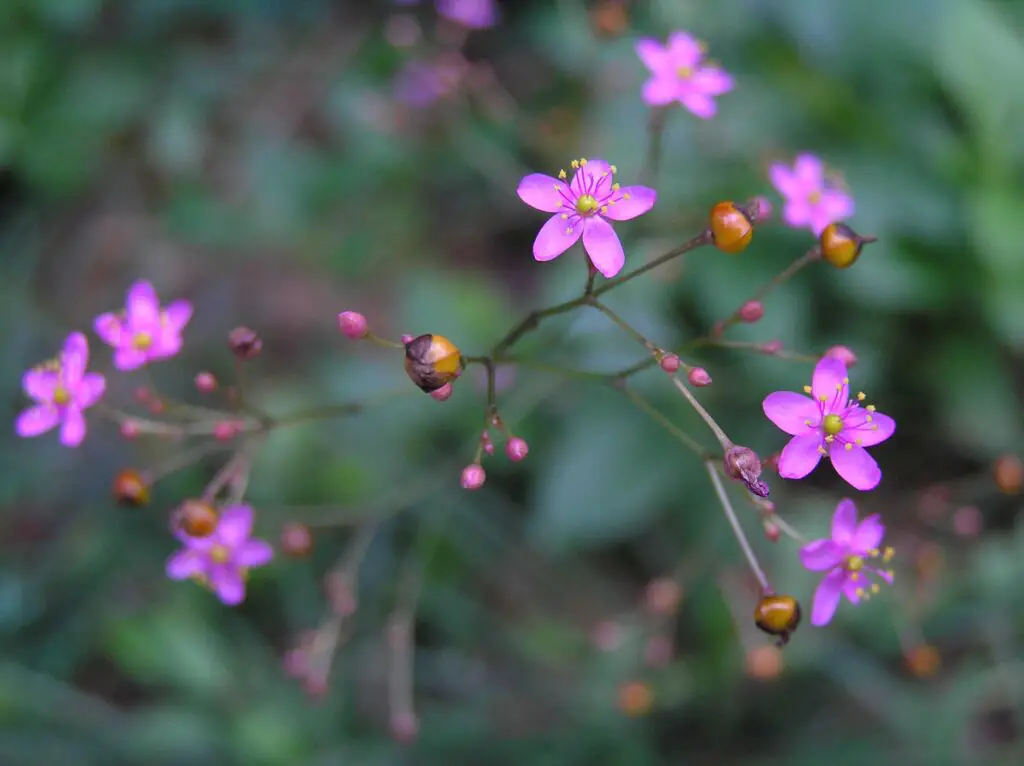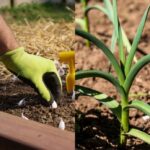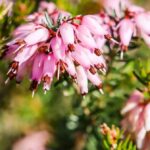Most of the time we gardeners are in search of plants, which can fulfill both objectives in the garden, edibility, and decorations. But most of the time we find a plant that can either fulfill the choice of edibility or the decoration. If you want to achieve both objectives at the same time then you need to know how to grow jewels of Opar.
From the name of the plant, which resembles the name of a magnificent and mythical ancient city, you can imagine how good it can be as it is characterized as a jewel. Once added to the garden, you will be amazed by its beauty and the characteristics it possesses.

Jewels of Opar Plants
Botanically known as Talinum paniculatum, this is a natural succulent flower, used for ornamental value mainly, and also for edible purposes. It is commonly known as a pink baby flower and fame flower. You can plant this flower on the sides and also at the entrance of the gate or the garden.
Its flowers are unique. These flowers are star-shaped and they are pink in color. These plants have very sharp green leaves. The pink flowers on the green leaves, this particular scene in the garden makes eyes very cool. Its flowers look like pink cotton candy on the plants.
If planted alone it already seems good. But if planted in a set or there are other plants of the jewels of the Opar, it creates the constellation like a star. It looks so good that you cannot explain it in words. It makes a bouquet of flowers. Moreover, this plant is quite easy to take care of.
Why Plant Jewels of Opar?
Is Jewel of Opar edible?
First of all, as discussed earlier this plant not only adds ornamental value to the garden or to the indoor settings but also fulfills the edibility purpose also. When planted in the garden, it serves the ornamental purpose for a longer period of time till the last frost of the winter.
This plant grows well in the sun but can also show progress in the shades. Place it near the shiny door if planted indoors. Moreover, it is a useful source of green leaves as vegetables in the hot summers. It also tastes good. It can be easily sown from the seeds by saving the flowers.
Also, as this plant has a sizable number of flowers, it attracts bees and other pollinators, which helps in good pollination in the garden. This plant is easy to transplant to the garden from the container in which it has been sown. Also, this plant is drought tolerant, but not for a longer time.
These qualities make it a plant, which is easy to take care of, with a lot of benefits. Also, these plants grow up to 2 to 3 feet. So, it does not spread a lot, which makes it easy to take care of. This plant can be grown in the USDA zones of seven and above.
How to Grow Jewels of Opar Plants?
How do you grow Talinum?
Growing jewels of the Opar is easy. It is easy to take care of. This plant is native to the United States and can be grown in seven and above zones. Just make sure you are starting the process of growing this plant at the right time. Start your process in a way that you would be able to transplant seedlings after the last frost.
Jewels of Opar Seeds
You can get the seeds by yourself, from the plant owner of the jewels of Opar. Or you can purchase them online. Clean the seeds before sowing. It is important because its seeds are small, and they might contain unwanted seeds. So, cleaning will help in avoiding the unnecessary.
Sowing the Jewels of Opar
Do Jewels-of-Opar need light to germinate?
You need to first sow the jewels of the Opar indoors. Make sure the container selected is well-drained and it is the right time to sow the seeds. Because we have to transplant the seedlings after the last frost of the winter. Start it 6 to 8 weeks before the last frost.
Get the container and fill it with the soil, which is the mixture of the soil and compost. This will give the soft and loosened soil for seeds to grow. Sow the seeds in the soil. Make a thin layer of soil on the seeds, so that they are fully covered.
Make sure the soil is moistened before the seeds are sown. Also, after the seeds are sown you have to provide enough water so that moisture is intact. Keep the container indoors. After 6 to 14 days seeds will start germinating. You need to check for the weeds. You can transplant the seedlings after they have been hardened off.
Transplanting the Seedlings of Jewels of Opar
Now as the seedlings have hardened off, you should start making space for these beauties in the garden. Select the space with care.
Select the space preferably which has quite of exposure to the sun. These plants grow well in the full sun. It can also grow in shades. If sunny space is not available, try to set the space where there is a composition of a shiny-shady atmosphere. It will be at least good to go.
Now till the selected space well and get the weeds out. You can add a mixture of organic composted matter, but this plant can do well with poor soils also. You need to make sure that the soil is well-drained. It will help in avoiding many complications.
Now as the soil is ready you can now transplant the seedlings. Make sure the holes are well dug to cover the root ball of the plant. Keep the space of 12 to 18 inches between the plants. Gently press the soil around the plants after plantation. Add water to the plants once these plants are being planted.
Make sure you transplant the seedlings which are well established. Weaker plants might have a low success ratio.
Taking Care

Care of jewels of Opar is quite easy. You need to take mild care at the beginning of the plantation. Once these plants are established you are good to go. They need little or no care afterward.
Watering
Water the plants well, so that they are well moistened. If there are long and hot sunny days, water the plants well until they are established. Do not overwater these plants because this activity might cause problems for the plant. However, this plant is drought tolerant for 1 to 2 weeks, once established.
Requirement of Sunlight
As mentioned earlier these plants need good sunlight exposure to grow and glow well. It can prosper in the shades. Make the watering schedule in the early days according to sunlight exposure intensity and duration.
Pests and Diseases of Jewels of Opar
There are not a lot of pests and diseases for the jewels of Opar. Common ones are overwatering, aphids, and spider mites.
Spider mites attack the plants when there is a dry and warm season. If there is a minor attack of spider mites, you can spray the mixture of water and mild dish soap regularly. Check for a major attack. If there is a major attack, kindly consult with nearby horticulturists to use any chemical pesticides.
Aphids are hard to remove once they are there on the plants. You can use a sharp spray of water to remove them. Also, consult horticulturists to use any insecticide to remove the aphids from the plants.
Overwatering in many plants causes most of the problems. If leaves start to fall when there is no season of leaves fall. It is due to overwatering. Overwatering also causes the roots to rot. so keep this in mind and keep the watering in control for jewels of Opar.
Harvesting the Jewels of Opar
You can harvest the berries of the jewels of Opar after the flowers have dropped, the stem has turned from fresh green to darker color to almost red color. Foliage is mild-tasting edible green. You can save these berries for the next propagation of the jewels of the Opar.
Edible Uses of Jewels of Opar
Can you eat Talinum Paniculatum?
Here are many edible uses of jewels of Opar. Most of the time its leaves are eaten. These leaves are used in salads, sandwiches, and stews. These leaves are valuable because they are regularly available in hot summers. Also, the seeds are a useful source of Omega3 oils.
What are the benefits of Talinum?
There are some medicinal uses of the jewels of Opar in Asian countries. Its excess usage can cause poisoning. So, use it as medicine after proper consultation with a doctor.
This plant is a true value addition to the garden. It not only fulfills all the aspects of gardening that one gardener seeks but also it can be propagated easily. Once you grow it, you will definitely wish to add more of them, and people will ask for its seeds.
You May Also Like
- 40 Fall Decor Ideas for the Bathroom

- 15 Best Vegetables to Grow in Winter

- How to Grow Garlic in Fall?

- How to Protect Plants in Winter?

- 22 Plants That Survive in the Winter?

- 20 Plants That Flowers in Winter

How to Grow White Asparagus from Seeds
References

